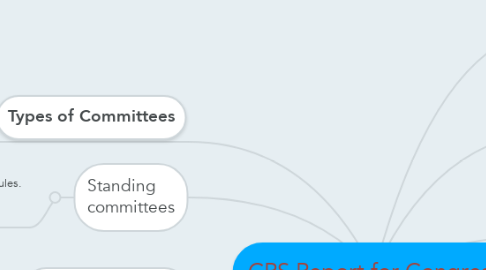CRS Report for Congress
Garrett Smithermanにより

1. Each committee adopts its own rules; thus, there is considerable variation among panels.
2. Decentrilization
2.1. Due to the high volume and complexity of its work, Congress divides its legislative, oversight, and internal administrative tasks among committees and subcommittees.
3. Committees generally operate rather independently of each other and of their parent chambers.
4. Types of Committees
5. Standing committees
5.1. Permanent panels identified in chamber rules. The rules also list the jurisdiction of each committee.
6. Select committees
6.1. Established by a separate resolution of the parent chamber, sometimes to conduct investigations and studies, sometimes to consider measures.
7. Joint committees
7.1. Made up of Members of both chambers. Today, they usually are permanent panels that conduct studies or perform housekeeping tasks rather than consider measures. A conference committee is a temporary joint committee formed to resolve differences in Senate- and House-passed versions of a particular measure.
8. Staff
8.1. Approximately 2,000 aides provide professional, administrative, and clerical support to committees. Their main job is to assist with writing, analyzing, amending, and recommending measures to the full chamber,
9. Referral
9.1. Each committee has nearly exclusive right to consider measures within its jurisdiction. In general, committees are not required to act on any measure,
10. Hearings
10.1. Committees frequently hold hearings to receive testimony from individuals not on the committee. Hearings may be for legislative, oversight, or investigative purposes.


